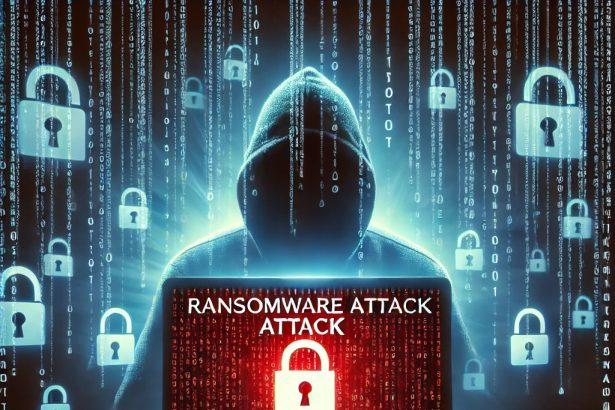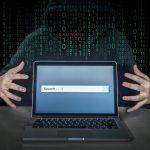The Numec ransomware is a new and dangerous file-encrypting malware variant belonging to the ever-growing family of ransomware threats. It works by stealthily infiltrating systems, encrypting valuable files, and demanding a ransom payment in exchange for a decryption key. Victims of Numec often find themselves locked out of important personal and business data, facing the hard choice of paying cybercriminals or losing their information permanently. Understanding this threat is critical to protecting your devices and your data.
Overview of Numec Ransomware
Numec ransomware operates like many other ransomware strains: it encrypts a user’s files and appends the “.numec” extension to them. After encryption, it drops a ransom note titled “numec.txt” that demands a ransom payment in exchange for the decryption tool.
Here’s a detailed table summarizing the Numec ransomware threat:
| Category | Details |
|---|---|
| Threat Type | Ransomware |
| Encrypted File Extension | .numec |
| Ransom Note File Name(s) | numec.txt |
| Associated Email Addresses | Not specified |
| Detection Names | Trojan.Filecoder, Ransom:Win32/StopCrypt, Win32/Filecoder.Numec.A |
| Symptoms of Infection | Files are encrypted and renamed with a .numec extension; ransom note left on desktop or in affected folders; applications may crash; system performance degradation |
| Damage, Distribution Methods | Encrypts files making them inaccessible; distributed via phishing emails, cracked software downloads, fake updates, malicious ads |
| Danger Level | Critical |
| Removal Tool | SpyHunter |
Detailed Threat Evaluation
How Did I Get Infected?
Victims typically get infected with Numec ransomware through various deceptive tactics:
- Downloading cracked or pirated software from unreliable sources.
- Clicking on malicious email attachments.
- Falling for fake software updates and pop-up ads.
- Visiting compromised websites hosting exploit kits.
Once the ransomware infiltrates a system, it immediately begins encrypting files, causing significant data loss within minutes.
What Does Numec Ransomware Do?
After successful infiltration, Numec ransomware encrypts a wide range of file types (documents, images, videos, databases) and modifies their filenames with the .numec extension. It then places a ransom note (numec.txt) in affected folders and possibly on the desktop, instructing victims to contact the cybercriminals for decryption instructions. Without the decryption key (which attackers claim to provide upon payment), the encrypted files remain locked.
Should You Be Worried for Your System?
Absolutely. Numec ransomware poses a critical threat to personal users, businesses, and institutions alike. Beyond the immediate risk of permanent data loss, dealing with ransomware infections can lead to operational disruption, reputational damage, and financial losses if ransom is paid. Additionally, paying the ransom doesn’t guarantee that you’ll regain access to your data.
Ransom Note Text
Here is the content of the numec.txt ransom note left by the malware:
cssCopyEditAll your files have been encrypted!
To recover them, you need to buy a decryptor.
Write to our email address:
If no response within 24 hours, write to the reserve email.
(Note: Specific emails were not detailed in the source material.)
Manual Ransomware Removal Process
Important: Manual removal is recommended only for experienced users, as incorrect actions can lead to data loss or incomplete removal of the ransomware. If unsure, consider the SpyHunter Removal Method for a guided, automated solution.
Step 1: Disconnect from the Internet
- Immediately disable Wi-Fi or unplug the Ethernet cable to prevent the ransomware from communicating with remote servers.
- This can prevent additional encryption or further infections.
Step 2: Boot into Safe Mode
For Windows Users
- Windows 10/11:
- Press Windows + R, type
msconfig, and press Enter. - Under the Boot tab, select Safe boot and check Network.
- Click Apply, then OK, and restart your PC.
- Press Windows + R, type
- Windows 7/8:
- Restart your PC and press F8 repeatedly before Windows starts.
- Select Safe Mode with Networking and press Enter.
For Mac Users
- Restart your Mac and hold the Shift key immediately after the startup chime.
- Release the key when the Apple logo appears.
- Your Mac will boot in Safe Mode.
Step 3: Identify and Terminate Malicious Processes
Windows
- Open Task Manager by pressing Ctrl + Shift + Esc.
- Look for unusual processes consuming high CPU or memory.
- Right-click on the suspicious process and select End Task.
Mac
- Open Activity Monitor (Finder > Applications > Utilities > Activity Monitor).
- Look for unknown or high-resource-consuming processes.
- Select the suspicious process and click Force Quit.
Step 4: Delete Ransomware Files
Windows
- Open File Explorer and navigate to:
C:\Users\[Your Username]\AppData\LocalC:\Users\[Your Username]\AppData\RoamingC:\Windows\System32
- Identify and delete suspicious files (randomly named or recently modified items).
- Clear temporary files:
- Press Windows + R, type
%temp%, and hit Enter. - Delete all files in the Temp folder.
- Press Windows + R, type
Mac
- Open Finder and select Go > Go to Folder.
- Type
~/Library/Application Supportand check for unfamiliar files or folders. - Remove unknown
.plistfiles from~/Library/LaunchAgents.
Step 5: Remove Ransomware Entries from Registry or System Settings
Windows
- Press Windows + R, type
regedit, and hit Enter. - Navigate to:
HKEY_CURRENT_USER\SoftwareHKEY_LOCAL_MACHINE\Software
- Identify and delete ransomware-related registry entries.
Mac
- Open System Preferences > Users & Groups.
- Select the Login Items tab and remove any unknown startup programs.
- Check
~/Library/Preferencesfor malicious settings.
Step 6: Restore System Using a Backup or Restore Point
Windows
- Press Windows + R, type
rstrui, and press Enter. - Choose a restore point from before the infection and proceed.
Mac
- Restart your Mac and enter macOS Utilities by holding Command + R.
- Select Restore from Time Machine Backup and restore a safe backup.
Step 7: Attempt to Decrypt Files
- Check No More Ransom (www.nomoreransom.org) for available decryption tools.
- If unavailable, restore files from backups.
Automated Ransomware Removal with SpyHunter
If manual removal is too complex or risky, SpyHunter offers a safer, automated method for detecting and removing ransomware.
Step 1: Download SpyHunter
- Get SpyHunter from the official Enigma Software website.
Step 2: Install SpyHunter
- Open the downloaded file (
SpyHunter-Installer.exeor.dmgfor Mac users). - Follow the installation prompts.
- Launch SpyHunter upon completion.
Step 3: Run a Full System Scan
- Click Start Scan Now to detect malware and ransomware.
- Wait for the scan to complete and review detected threats.
Step 4: Remove Detected Ransomware
- Click Fix Threats to remove identified ransomware components.
- SpyHunter will clean your system automatically.
Step 5: SpyHunter’s Custom Malware HelpDesk
- If ransomware persists, use SpyHunter’s Malware HelpDesk for custom malware fixes.
Step 6: Restore Files
- Use backups stored on external drives or cloud storage.
- If no backup is available, check No More Ransom for decryption tools.
Preventing Future Ransomware Attacks
- Keep backups: Use cloud storage or an external hard drive.
- Install a reliable security tool: SpyHunter offers real-time protection against malware.
- Enable Windows Defender or Mac security features for additional protection.
- Avoid phishing emails and unknown attachments.
- Regularly update Windows, macOS, and installed applications.
Conclusion
Numec ransomware is a devastating cyber threat capable of crippling personal and organizational systems within minutes. Since attackers often do not respond even after ransom payments, it’s crucial to avoid engaging with them. Instead, focus on removing the ransomware completely and recovering data from secure backups. Installing a reliable security solution such as SpyHunter can help detect and remove Numec ransomware and similar threats, ensuring your system stays protected.




